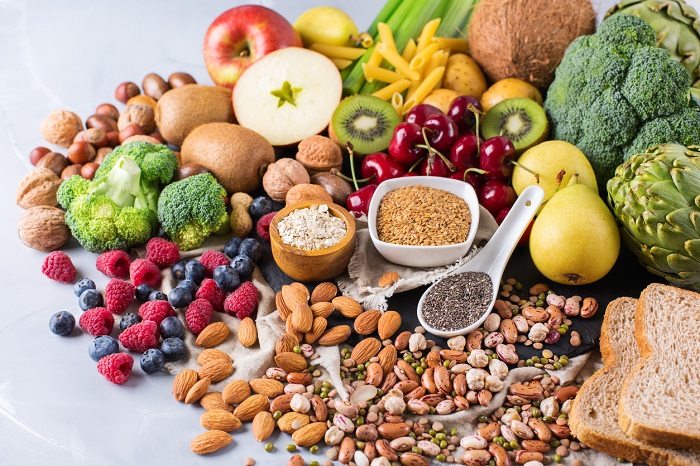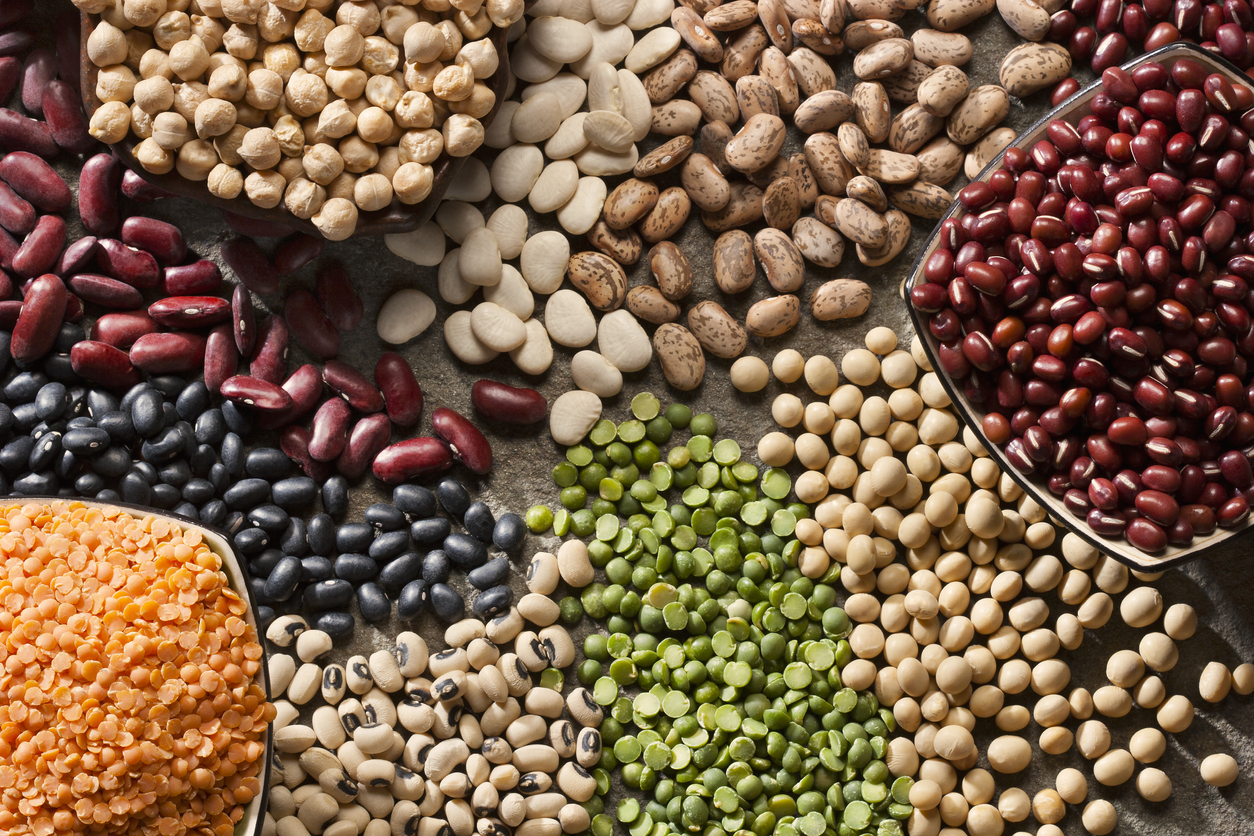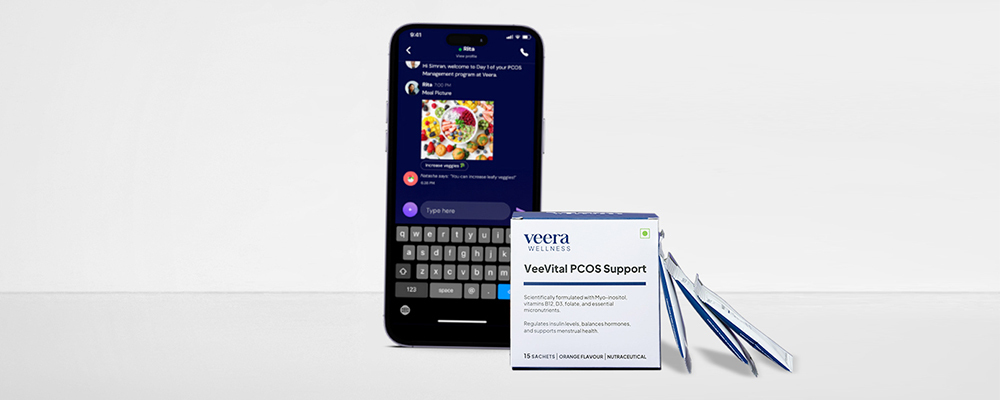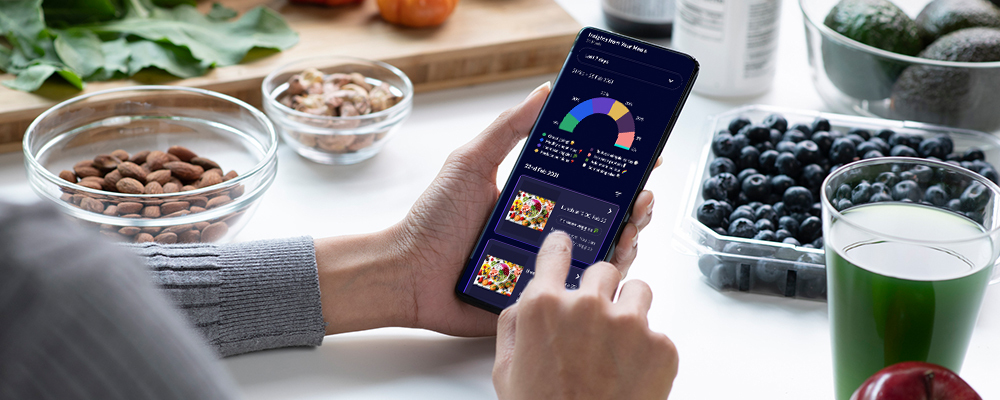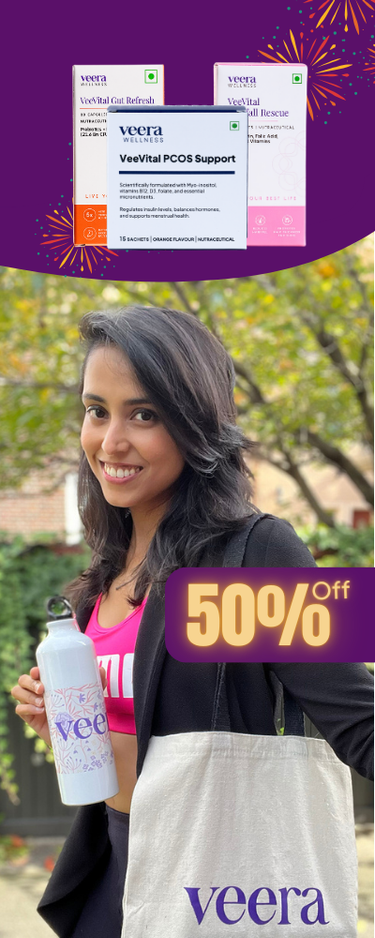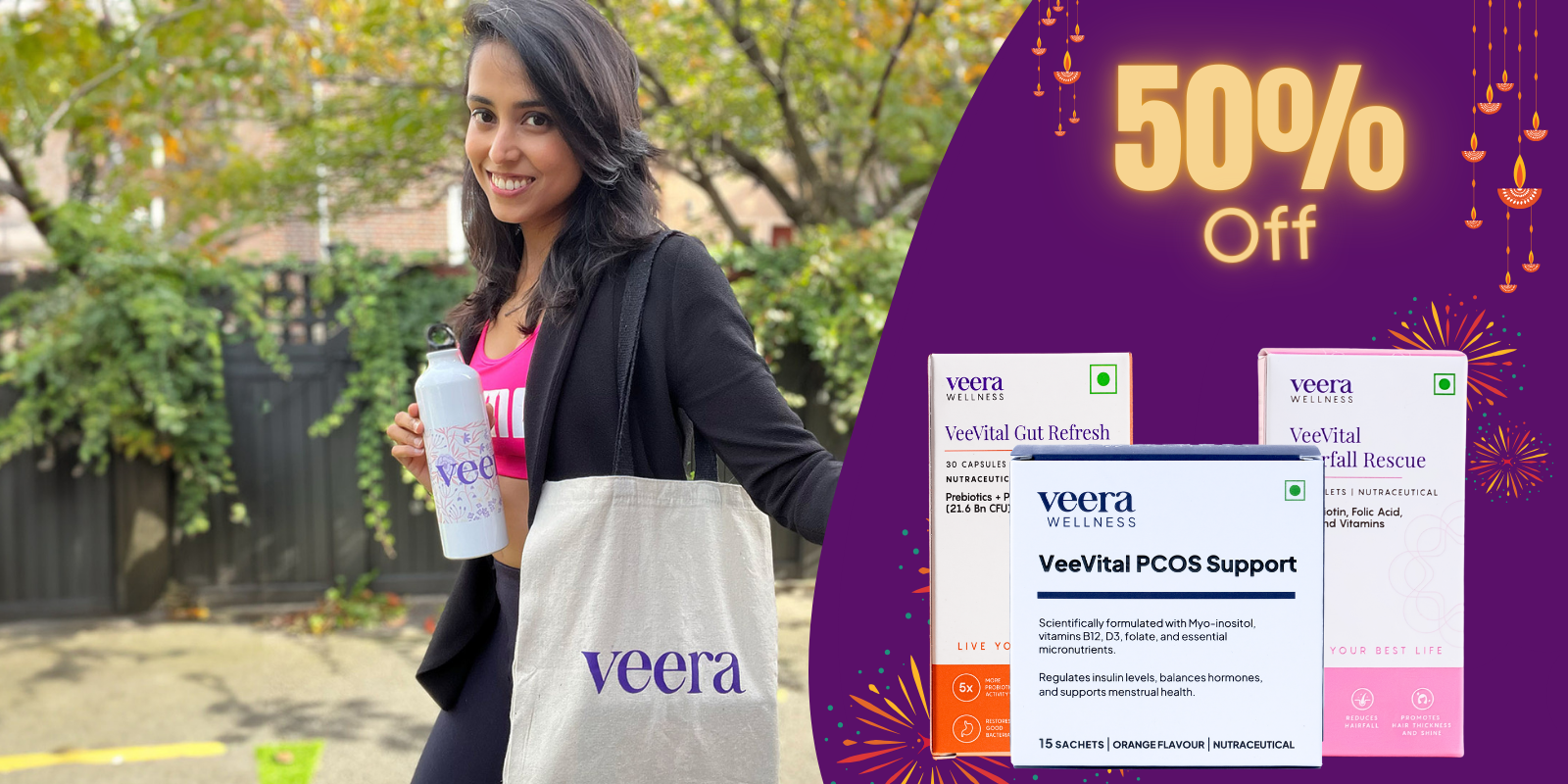Pulses exhibit a low glycaemic index, indicating a slower digestion process contributing to favorable insulin regulation. As plant-based protein sources, they are inherently low in sulfur amino acids. The researchers caution that foods rich in sulfur amino acids, such as animal proteins, may threaten bone health. The preferred approach for addressing PCOS symptoms involves lifestyle interventions like incorporating daily pulses.
Lentils boast a rich profile of proteins, fibers, mineral salts, iron, phosphorous, magnesium, potassium and B-group vitamins, making them highly beneficial for the body. Not only are they low in fat and calories, but they also possess notable anti-aging properties. Consequently, incorporating lentils into our regular diet is advisable, extending beyond the festive season. Various delectable options are available, such as lentil soup, croquettes, burgers, or simple stews.
With a touch of creativity, lentils can be utilized to craft starters, finger foods, or salads. Choosing dried lentils over canned ones is recommended as the former lack preservatives. Depending on the variety, a brief soak in cold water may be required before boiling, though their soaking time is generally shorter compared to other pulses, rendering them more convenient to use. Due to their versatility, lentils find extensive application in the vegan diet, offering a plethora of nutrients and contributing to overall health.
Understanding Polycystic Ovary Syndrome
PCOS (Polycystic Ovary Syndrome) is a metabolic disorder characterized by hormonal imbalances affecting women during their reproductive years, typically between ages 12 and 51. Elevated levels of male hormones in PCOS can lead to the skipping of menstrual periods, irregular ovulation (making conception difficult), abnormal hair growth on the body and face and potentially contribute to long-term risks of heart disease and diabetes. Given its severity, PCOS necessitates proper medical attention or even surgical treatment.
Many women may have PCOD/PCOS without being aware of it, as the condition manifests through various symptoms impacting ovulation and ovaries, including ovarian cysts, increased levels of male hormones and irregular or skipped menstrual periods.
In India, the prevalence of PCOS has been studied in limited regions by a few researchers. However, due to the scarcity of data and variations across different regions, defining the precise prevalence of PCOS in India proves challenging. The available data suggests a prevalence ranging from 3.7% to 22.5%.
An Overview of Lentils
Lentils boast low sodium and saturated fat content, coupled with high levels of potassium, fiber, folate and polyphenols, which are plant chemicals exhibiting antioxidant activity. These nutritional characteristics have prompted researchers to investigate their impact on chronic diseases. Lentils also encompass slow-digesting resistant starch, leading to delayed absorption of carbohydrates with blood sugar-lowering effects. Moreover, they serve as a source of prebiotics, nourishing gut flora and aiding in the prevention of digestive diseases. Animal studies have demonstrated that lentils possess the potential to reduce blood pressure, blood cholesterol and blood glucose. Human studies suggest that lentils may enhance cholesterol levels in individuals with diabetes and could offer protection against breast cancer in women.
What Are the Health Benefits?
-
Disease Protection
Regular consumption of lentils is associated with enhanced well-being and a decreased risk of chronic ailments such as diabetes, obesity, heart disease and certain cancers, including breast cancer, according to studies.
The plant-based compounds known as polyphenols found in lentils exhibit potentially robust effects. Polyphenols may possess anti-inflammatory, antioxidant properties (combating cell damage) and neuroprotective qualities (safeguarding brain health). Lentils have shown potential in improving cholesterol levels for individuals with diabetes, and their low glycaemic index contributes to diabetes prevention or management. Legumes, including lentils, are broadly linked to a reduced risk of cancer. The fiber content in lentils, coupled with antioxidant attributes, may deter cell damage and inhibit cancer growth.
While definitive conclusions on how lentils impact health require further exploration, the beneficial effects of their components, from fiber and vitamins to polyphenols, are becoming clearer. The inclusion of legumes, such as lentils, in a Mediterranean diet is associated with improved health outcomes.
-
Blood Pressure Regulation
Lentils play a role in blood pressure regulation due to their potassium content, countering the adverse effects of salt that can lead to hypertension. A half cup of cooked split red lentils contains over 270 milligrams of potassium. Additionally, their high protein levels make lentils a favorable substitute for red meat, contributing to blood pressure control. It is advisable to balance lentils with whole grains to address certain essential amino acid deficiencies.
-
Heart Health Enhancement
Lentils are rich in folate, supporting heart health and aiding in the formation of red blood cells. This is particularly crucial during pregnancy for fetal development. Lentils, with their ample folate, iron and vitamin B1 content, may be linked to a lower risk of heart disease by reducing bad cholesterol and blood pressure. In comparison to chickpeas, peas, or beans, a study found that lentils led to more significant reductions in blood pressure.
-
Energy Boost
Iron, essential for combating fatigue and addressing anemia, is present in lentils. Half a cup of cooked lentils can fulfill 15% of your recommended daily iron needs. For individuals following a vegan or vegetarian diet, lentils serve as a significant source of iron. Enhancing iron absorption by combining lentils with vitamin C-rich foods like tomatoes, potatoes, bell peppers, or Brussels sprouts is recommended.
-
Digestive System Support
Lentils are abundant in a specific type of fiber that facilitates proper digestive system function and nourishes beneficial bacteria in the gut. This fiber may also contribute to a reduced risk of colorectal cancer. High-fiber foods like lentils play a vital role in bowel regulation and immune system protection, promoting overall health and activity.
Are There Any Disadvantages?
Consuming excessive or inadequately cooked lentils may result in noticeable effects, and those nearby might be privy to audible signs. Lentils, akin to certain fruits and vegetables, contain fiber that poses a challenge for your body to break down. While this fiber aids in fostering beneficial bacteria in your gut, an excess can lead to cramping and gas. To mitigate these symptoms, it is advised to gradually increase your fiber intake.
While lentils are generally a safe and nutritious addition to most people’s diets, it’s important to note that they contain natural compounds known as anti-nutrients. These compounds can bind with essential nutrients like iron and zinc, potentially impeding their absorption in our bodies. To mitigate this effect, soaking and cooking lentils is recommended.
Furthermore, some individuals may experience a lentil allergy, particularly if they have previously exhibited allergic reactions to other legumes such as chickpeas. Interestingly, in certain European regions, including Spain, lentil allergies are reported to be more prevalent than peanut allergies.
If you suspect you may have a lentil allergy or are concerned about food intolerance, consulting with a healthcare provider is advisable. They can assist in determining whether an allergy exists and address any other dietary concerns you may have, especially if you intend to incorporate more lentils into your diet.
Tips for Incorporating Lentils Into a PCOS-Friendly Diet
How To Prepare Lentils
Give them a good rinse. Occasionally, dried lentils may contain small rocks or debris. To ensure these are not consumed, rinse the lentils in a fine mesh sieve and carefully inspect them before cooking. Remove any debris and discard any shriveled lentils.
Next, simmer away! Unlike other grains like couscous or quinoa, there’s no need for a specific lentil-to-water ratio. Simply fill a large pot halfway with water, bring it to a boil and introduce the lentils. Allow them to simmer until they reach the desired tenderness. The precise cooking time will vary based on the type of lentils you are using.
Types of Dal To Make
Yellow Split Moong Dal
Yellow moong dal is a commonly utilized type of dal in Indian cuisine. Due to being unhusked, it cooks quickly without the need for prolonged soaking. These split yellow lentils are versatile, being employed in a range of dishes, both savory and sweet, from classic everyday dals to moong dal halwa. Yellow moong dal is also suitable for making khichdi, salads and stuffed parathas.
Whole Green Moong Dal
Packed with essential nutrients such as protein, manganese, magnesium and fiber, whole green moong dal is a nutritional powerhouse that doesn’t weigh heavily on the stomach. This dal can be consumed both sprouted and whole. While it is commonly used in stews and dals in North India, it is predominantly featured in the creation of pesarattu, similar to dosas, in South India. From soups and salads to pulao and cheelas, this vegan-friendly dal variant is widely celebrated in Indian cuisine.
Whole Masoor Dal
Brimming with fiber, whole masoor dal enriches your dal with protein. To fully enjoy the flavourful taste of this delicious dal, soaking for approximately six hours or overnight is recommended. Widely employed in North India for making tadkewali masoor dal, it is also the key ingredient for the renowned khichda.
Split Orange Masoor Dal
The split orange masoor dal is the de-husked counterpart of the whole masoor dal. Quick to cook and easy to prepare, this dal variety is relatively gentler on the stomach. Featuring potassium, fiber, iron and essential amino acids, split orange masoor dal imparts an earthy flavor and can be prepared in various ways depending on the region.
Whole Black Urad Dal
Characterized by a black outer layer and white interior, the whole black urad dal is rich in fiber and requires overnight soaking before cooking. Renowned as the foundational grain for North Indian dishes like “Dal Makhani,” this dal variety is also utilized in preparing dal Bukhara, pepper vada and adadiya pak.
Split Black Urad Dal
A split variation of whole black urad dal, the split black urad dal is best suited for dishes that require grinding these grains to create a batter.
Whole White Urad Dal
Ideal for making a variety of vadas and dosas, whole white urad dal is best utilized when churned into flour or ground into a batter. Popular dishes like South Indian Medu Vada and North Indian Dahi Vada can be crafted using this dal variety.
Split White Urad Dal
This type of urad dal is favored in South India and serves as a crucial element in seasoning and tadka to enhance the flavor of various dishes. Apart from this, split white urad dal is employed in making payasams, vadas and papads.
Split Chana Dal
Featuring a nutty flavor that complements spices well, split chana dal is perfect for creating comforting and warm meals. This dal variant can be used in a variety of dishes, including cheelas, koftas, puran poli and dry curries.
Black Chickpeas
Also referred to as kala chana, black chickpeas require overnight soaking and pressure-cooking to create delicious dishes. In Kerala, this type of chana dal is used to prepare an authentic dish called Kadala curry, mixed with coconut milk.
White Chickpeas
Used to prepare the classic North Indian dish, pindi chole, often served with popular accompaniments like kulcha or bhatura, white chickpeas or kabuli chana are also the main ingredients in Mediterranean dishes such as falafel and hummus.
Red Kidney Beans
Red kidney beans, known as rajma, are a primary ingredient in the famous North Indian dish Rajma Chawal. These beans are perfect for creating a hearty gravy that pairs well with white rice, though their use is not limited to this; they can also be used in salads or added to pulao.
Black Eyed Peas
Also recognized as lobia and white chawli, black-eyed peas shine when transformed into a flavourful curry. Stir-frying them yields sundal, and boiling them opens up the possibility of crafting a refreshing salad.
Moth Beans
Rich in protein, moth beans provide sustained energy. Packed with essential nutrients like phosphorus, potassium, magnesium, vitamin B, iron, manganese, sodium, copper and zinc, this dal variety can be transformed into a delightful curry or a light and high-fiber khichdi.
Work With an Expert for a Customized Nutrition Plan
A Registered Dietitian (RD) is, quite literally, an expert in nutrition and dietetics. RDs play a crucial role in promoting health and managing diseases, as what we consume directly affects our overall well-being. Contrary to popular misconceptions that focus solely on weight loss, dietitians are involved in a broad spectrum of responsibilities. They operate in diverse settings such as hospitals, clinics, schools, corporations, state and local governments and independent practices.
Ultimately, dietitians are equipped to assist clients with a wide range of matters related to food and nutrition. This includes aiding clients in meal planning, as well as providing specialized advice to the medical team for patients reliant on feeding tubes. Their expertise extends beyond weight management, encompassing various aspects of health and nutrition. A prevalent misconception is that dietitians are exclusively focused on assisting with weight loss. This assumption is inaccurate!
Surprisingly, a considerable portion of the population faces challenges in gaining weight. A dietitian will analyze your existing food habits to identify areas that require adjustments, tailored to help you achieve your weight-related objectives. While it may not happen as rapidly as desired, it’s essential to recognize that drastic weight loss or gain is not a sustainable and healthy long-term approach. Dietitians collaborate with individuals from diverse backgrounds, each with unique habits, lifestyles and health requirements.
Fundamentally, a dietitian can evaluate your specific needs, establish achievable nutrition goals, devise a personalized strategy, provide ongoing accountability (emphasizing the importance of follow-ups) and adapt your plan as needed. While some nutritionists operate in physical offices or clinical environments, we at Veera Health offer virtual services. There’s a dietitian available to suit your personal preferences. To connect with our team for nutrition assistance, book a free appointment!
Learn More With Veera
Lentils can aid in weight loss due to their unique nutritional properties. However, it’s crucial to understand that, although they provide tangible benefits, lentils are not a magical solution. They are most effective when incorporated into a well-balanced diet and a consistent exercise routine, rather than serving as a replacement for them. For additional information, seek guidance from the experienced care managers at Veera Health.

